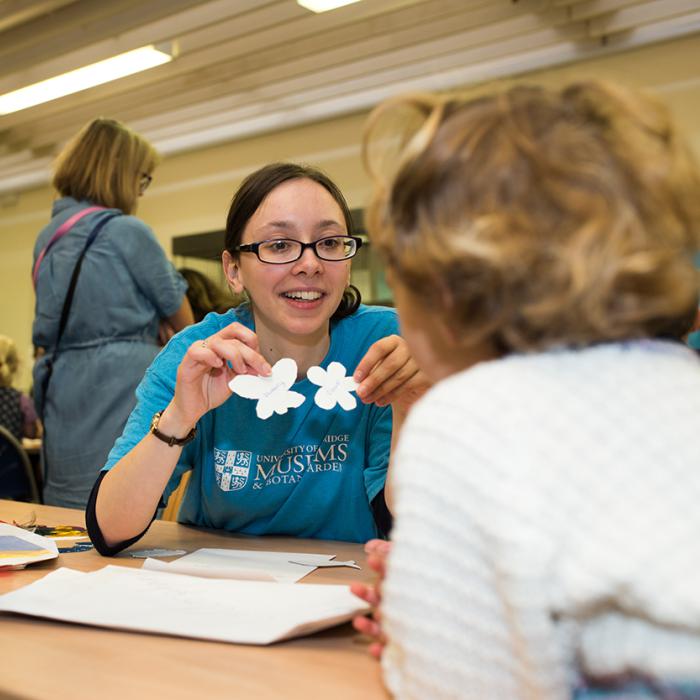Did you know that hidden behind a Victorian facade on Free School Lane is the original 1618 hall of Cambridge’s Free School? Join the Whipple Museum’s Curator Dr Hannah Price for a walk up one of Cambridge’s most historic and scientific streets. Along the way, we’ll encounter medieval friars and seventeenth-century schoolboys, James Clerk Maxwell and Rosalind Franklin, and many more secrets...
Drop in. Meet at the Whipple Museum’s front desk.
The Great Comet of 1618 was the very first comet to be studied through a telescope. It was so bright it was spotted all over the world! Whoosh into the Museum’s Learning Gallery for hands-on family fun, and find out more about the comet and other science stories.
Drop in. Learning Gallery.
The Whipple collection contains some astonishing scientific instruments from the 17th century, but how were they used in practice? In this special Open Cambridge talk, the Museum’s Director Dr Joshua Nall will introduce you to a short history of 17th-century instruments and their use.
Drop in. Seated talk in the Learning Gallery.
Find out how the Museum’s collections team cares for our delicate and intricate 17th-century objects in this special behind-the-scenes session with Whipple Collections Manager, Morgan Bell. Morgan will be sharing some of the techniques used by conservators and collections professionals to ensure the objects will remain in good condition for another four centuries and more.
10-10.30am and 10.30-11am
Drop in, but spaces are limited. Meet at the Museum front desk.
Rowan Huntley, MA is the artist behind the upcoming special exhibition at the Polar Museum, Through Ice and Fire. This talk will give a behind the scenes look at Rowan's artistic processes and the science of creation. The artwork in Through Ice and Fire explores the scientific work of Dr Joanne Johnson and echoes Rowan's deep emotional connection with the natural world.
This UK Fungus Day, join us for Fungi Field Day at the Botanic Garden to celebrate fungi and their relationships with plants. Come along to learn, engage and play, and discover what we can do to help conserve the fungal diversity around us.
Highlights include:
🍄 A range of talks from expert speakers about fungi, lichens and slime moulds.
🔬Science outreach stall with microscopes to view fungi that live deep inside plant roots.
If you feel like you’re slowing down, this is the programme for you.
Museum Boost is a programme of FREE monthly dance sessions inspired by stories from the University of Cambridge Museums and taking place at Mill Road Community Centre in Cambridge.
The sessions run on Fridays from 2.30 to 4pm:
- Friday 10 October
- Friday 14 November
- Friday 21 December
- Friday 30 January
- Friday 27 February
- Friday 27 March.
This is a partnership programme between the University of Cambridge Museums and Cambridge City Council.
In honour of our beautiful Jacobean building, originally Cambridge’s Free School, we’re exploring everything 17th-century, from historic scientific instruments to the secrets of our building. We’re open all day with family activities, curator talks and behind-the-scenes tours. Forsooth, gentles, it will be a merry meeting!
Programme :
We invite families with children who have additional sensory needs to join us for our Studio Sunday Relaxed Session. These quieter art making workshops aim to provide a comfortable creative experience at Kettle’s Yard.
In our Clore Learning Studio, participants can make art inspired by artworks and ideas at Kettle’s Yard, supported by artists and volunteers. No prior art experience is required.
Activities are designed for children ages 3–11 and we encourage parents and carers to create alongside their child.
Unlock your creativity at our free, artist-led workshops for families in the Clore Learning Studio.
Get hands-on with creative activities inspired by artworks and ideas at Kettle’s Yard.
No art experience needed — our friendly artists and volunteers will support you step-by-step. Children and adults of all ages are welcome to participate but Studio Sunday is most suitable for children between 3–11 years.

